Climbing Ben Nevis: A Beginners Guide With Route & Tips
Considering climbing Ben Nevis and wondering if it is a suitable hike for beginners?
Ben Nevis proudly stands as the highest peak in the UK, attracting hikers and climbers from across the world. We’ve climbed Ben Nevis many times, both with and without our kids.
As a family of avid trekkers, we’ve also hiked up many other British mountains, including Snowdonia and Scafell Pike. Our longest and highest hike (so far!) was Everest Base Camp with our kids.
This guide will discuss the essential things you must consider before ascending Ben Nevis to ensure a safe and rewarding journey to the summit and back.
Trekking The Dream! contains affiliate links and is an Amazon Services LLC Associates Program member. If you make a purchase using one of these links, we may receive a commission. This is at no extra cost to you and helps us to keep our site up and running! Read our privacy policy for more information.
Beginners Guide To Climbing Ben Nevis
Beginner & Family Friendly Route: Mountain Path
Ben Nevis Elevation: 1,345 m
Approximate Hike Time: 7-9 hours
Mountain Track Difficulty: Moderately challenging
Return Distance To Ben Nevis Summit: 10 miles | 16 kilometres
Where Is Ben Nevis?
Ben Nevis is located on the west coast of the Scottish Highlands and towers high over the outdoor capital of the UK, Fort William. The scenery is stunning, and you could spend days just soaking it in, but there are many other things to do in the area besides walking up Ben Nevis.
Getting to Fort William is straightforward by car or public bus from Inverness, Edinburgh and Glasgow. If you fancy taking the train, Glasgow has a direct service and is reasonably priced.
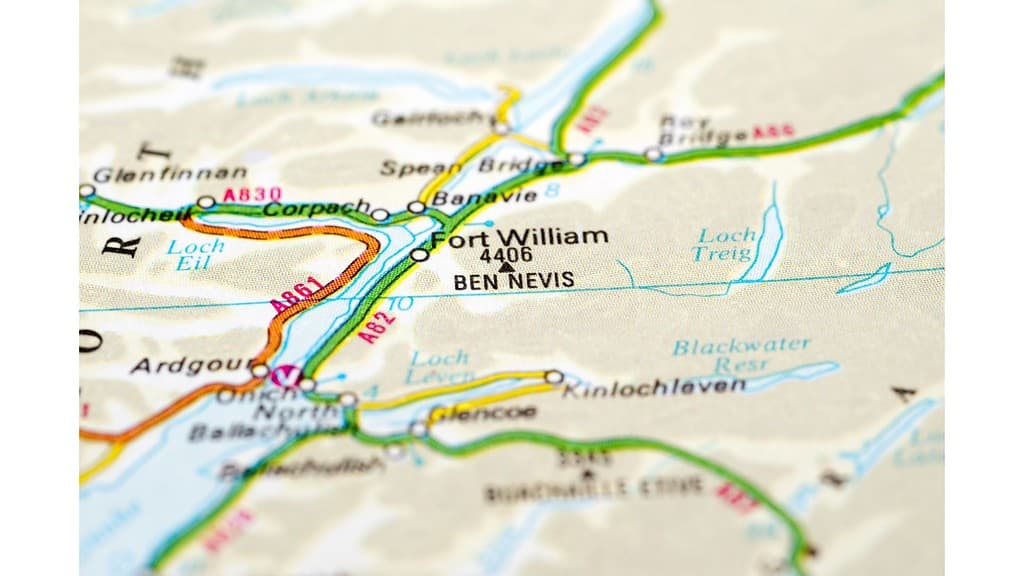
Is Ben Nevis Hard To Climb Or Beginner Friendly?
Ben Nevis tops out at an impressive 1,345 meters (4,413 feet), claiming the title of the highest peak in Britain. Many routes to the summit vary in difficulty, but the Ben Nevis Pony Track, also known as the Tourist Track, is the only route suitable for beginners.
Most guidebooks classify this classic Ben Nevis route as a moderate climb, and in good weather, most well-prepared hikers should be able to achieve it. The only way to the summit is hiking; there is no gondola to the top.
We first climbed Ben Nevis as teenagers and then hiked with our kids as young as five. While the mountain has some very challenging routes to its summit, the popular Tourist Track is not a hard climb with relatively straightforward navigation.
Winter on Ben Nevis can be technically challenging and is not beginner-friendly. Please do not attempt to hike the mountain in winter unless you are experienced enough. It is worth noting that winter conditions can be experienced almost all year round on the mountain. Check the forecast before you set off on your hike, and if you have any doubts, climb another day.
How Long Does It Take To Hike Ben Nevis?
The duration of a hike up Ben Nevis will vary depending on your fitness, how well you’ve prepared, the number of walkers on the trail, and your chosen route.
On average, trekking the main tourist route takes most hikers about 7-9 hours to complete the round trip, including breaks. More experienced climbers or those completing the Three Peaks Challenge might aim for faster times, while families or those adopting a more leisurely pace might take longer. With 5, 6 and 8 year olds we spent close to ten hours on the mountain, whereas with teens, we were up and down within seven hours.
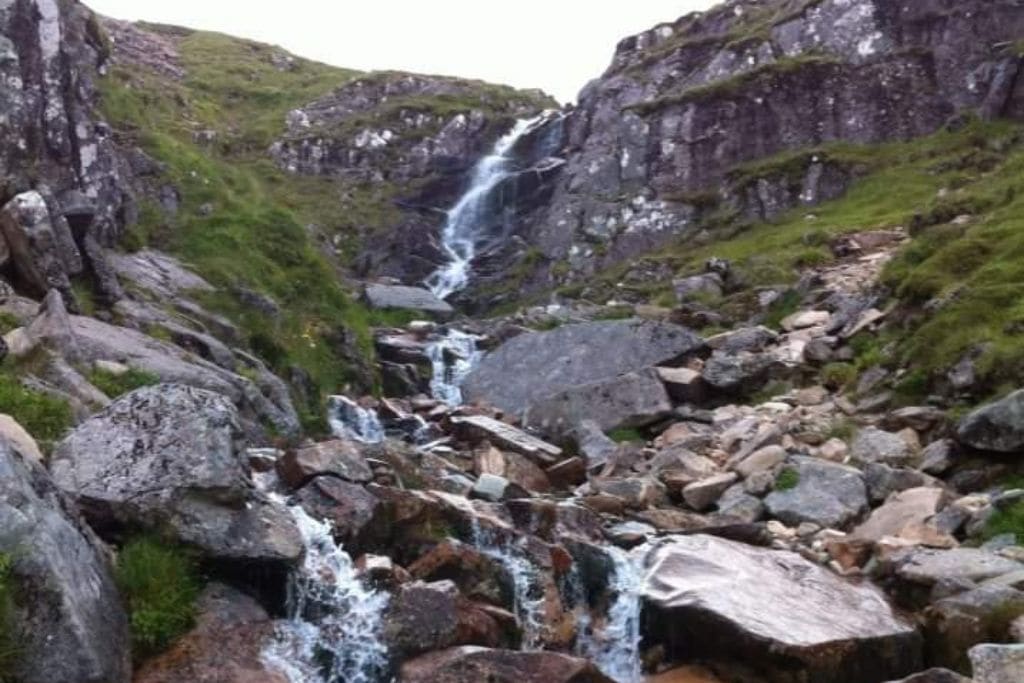
Best Time To Climb Ben Nevis
The best time to climb Ben Nevis is typically during the summer, from late May to early September. The weather is more predictable, and the trails are less hazardous.
Although this is also peak season, with more hikers on the track, we felt it was relatively quiet when we climbed in May and July.
Beginners should avoid the winter months due to harsh weather conditions, such as snow and limited daylight hours, which can pose additional challenges for hikers.
Always check the weather forecast before setting out, and be prepared for sudden changes in mountain weather. Even if you begin climbing in the sun, be prepared for wind, cloud, rain and snow at the summit. The live feed from the Ben Nevis webcams can give you an idea of the conditions.
Book a Ben Nevis Guided Walk if you are a beginner hiker
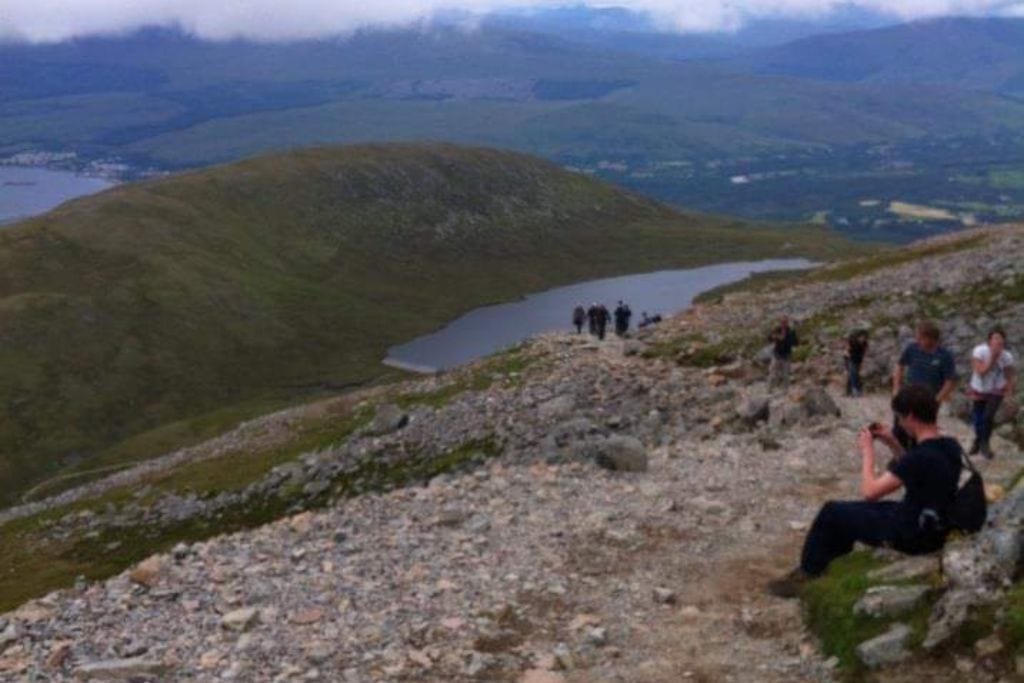
Family Friendly Ben Nevis Routes
Before walking Ben Nevis, it is essential to prepare for your adventure. Start by checking the weather forecast and assessing the trail conditions.
Pack with layers, waterproof gear, sturdy hiking boots, and plenty of snacks and water.
Take a map and compass (learn how to use them if you don’t already know) and talk through the route with your family, ensuring everyone is fit and ready for the challenge.
Start And End At The Ben Nevis Visitor Centre
Start your hike at the Ben Nevis Visitor Centre, where you’ll find parking (if you arrive early), facilities, and information about the mountain’s weather.
You can purchase a mountain map here and get advice from the friendly and experienced staff.
Take time to appreciate the stunning surroundings as you set off on the well-marked path through meadows and onwards up the mountain. Staying on the path is crucial to avoid damaging the delicate ecosystems on the hill.
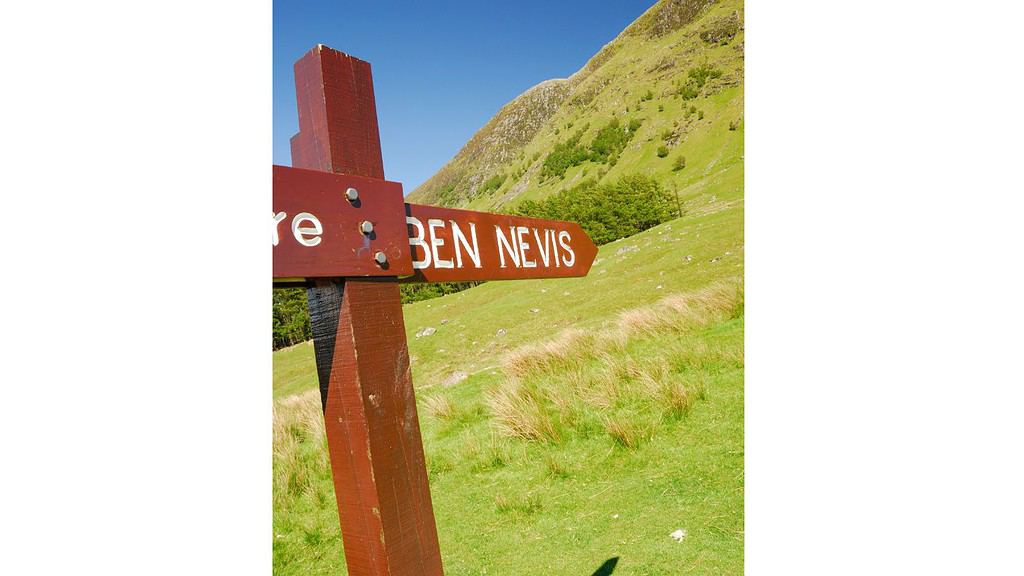
Mountain Path Route
Ben Nevis has several routes to the summit, each with unique challenges and scenic views. The most popular route, the Pony Track, also known as the Tourist Route or Mountain Path, is well-maintained and relatively straightforward, making it suitable for beginners and families.
Step 1 – From the Ben Nevis Visitor Centre, the trailhead takes you across River Nevis by footbridge and turns right. A sign directs you left to ascend the track past the Ben Nevis Inn.
Step 2 – Follow the path to the right. Stay on the well-maintained path as it ascends steeper in zigzags, and the views open up. Cross the footbridges over several streams as you climb up the valley, keeping the halfway lochan known as Loch Meall an t-Suidhe on your right.
Step 3 – Keep to the right until you pass the upper Red Burn Stream waterfall, where the track becomes more challenging. From here, you’ll zigzag through rougher, steeper terrain and loose scree. Continue with care and remain on the path to avoid the infamous Five Finger Gully, where many lives have been lost.
Ben Nevis Summit
Step 4 – The challenging climb eases as the top comes into view and you approach the summit.
On reaching the 1,345-metre summit of Ben Nevis, you may be greeted by panoramic views of the rugged Scottish Highlands, depending on the weather. The Torridon hills, Ben Lomond, Morven, the Isle of Skye, and, on a really clear day, Northern Ireland are all visible from the top. Bring a lightweight pair of binoculars to make the most of the view.
The summit is very rocky and is marked by a cairn. You’ll also find a trig point, several memorials and the remains of an observatory, which provides a spot to rest and reflect on your achievement of conquering Scotland’s highest peak.
Step 5 – Once you have been battered by the wind and taken in the views, it is time to descend via the same route. Ensure you navigate correctly to avoid the sheer drops if you step off the zigzag path. This is especially important if visibility is poor.
Important Note: Do not venture from the path at the summit, especially if there is poor visibility or snow coverage. There are extremely dangerous drops that are too easy to walk off if you are not careful.
Experienced climbers may opt for the ‘Carn Mor Dearg Arete’ route for an extreme challenge. This route requires a high degree of technical experience and should not be attempted by beginners; do not follow their path if you witness them at the summit.
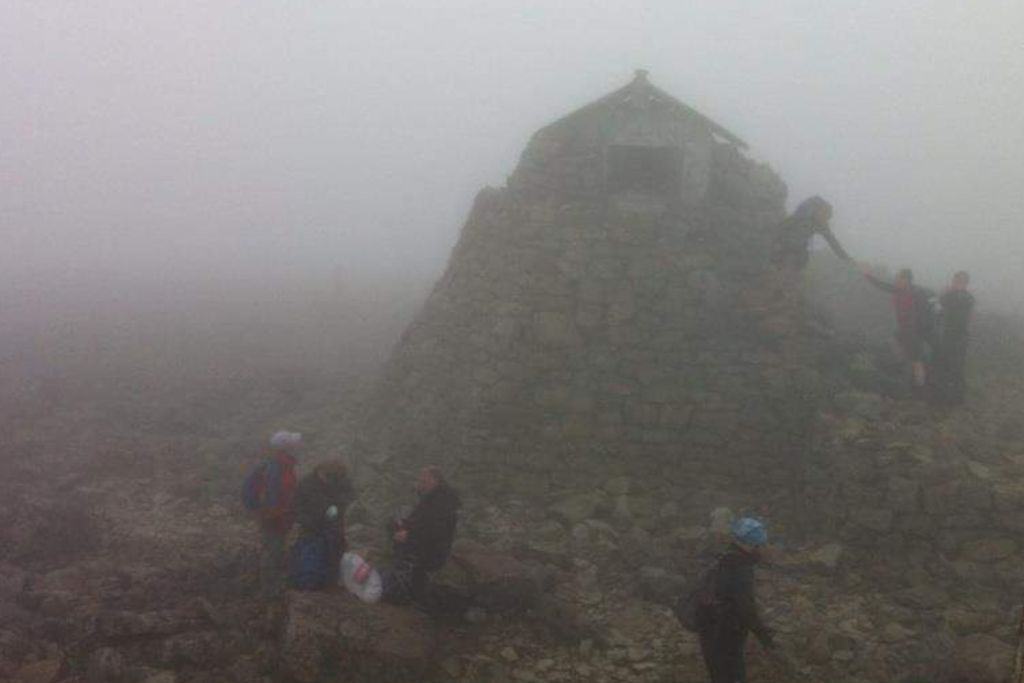
Essential Tips & Kit For Beginners Climbing Ben Nevis
- Hike Ben Nevis in summer when the weather is at its finest.
- Take a map and compass and know how to use them (essential if visibility is poor).
- Pack a torch, a basic first aid kit, a fully charged mobile phone and a power bank.
- Wear well-fitting hiking boots and comfy layered clothing.
- Prepare your family for uphill hiking, possibly with hiking poles.
- Start hiking Ben Nevis early in the morning.
- Take enough water, food and snacks for the hike in your rucksack.
- Stay on the track to avoid mountain erosion.
- Don’t wait to ask for help if you are struggling.
- Turn around if the weather worsens.
- Seek shelter and call for help if you cannot make your way safely down.
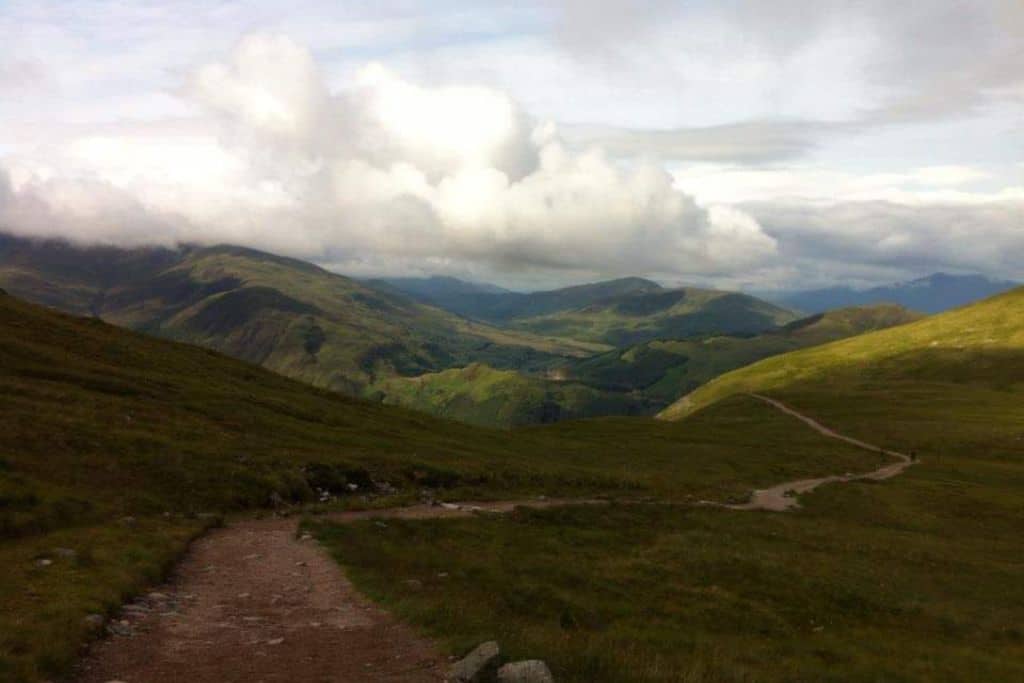
Ben Nevis Camping
There are several Ben Nevis campsites, most operating between March and October. Outside of these times, you’ll find hotels in Fort William. If you’re prepared, embrace the Scottish weather and wild camp!
While wild camping is permissible on Ben Nevis, you must follow the rules. These include being in a small group, staying for no more than 2-3 nights, setting up camp away from farms, buildings, and roads, and leaving no trace.
We stayed in a family tent for two nights at the Glen Nevis Caravan & Camping Park, which also has camping pods. It is located just 0.5 miles from the Ben Nevis visitor centre and is the perfect location for hiking the Mountain Path.
Climbing Ben Nevis FAQ’s
Ben Nevis can be challenging for beginners due to its steep ascents, rocky path and unpredictable weather. But with proper preparation and a good level of fitness, climbers of all levels can summit safely.
A guide is unnecessary when climbing the popular ‘Tourist Track’ in summer with fine weather. Mountaineering experience is required for all other routes, where using a professional guide is recommended.
Yes, children can walk Ben Nevis as long as they can walk for several hours. The ‘Tourist Track’ (aka Pony Track / Mountain Track) is the most suitable for families.
Ben Nevis offers the perfect mix of easy access, challenges to suit all levels of expertise and a stunning view from the top! It is also the UK’s highest mountain and, as such, attracts hikers from all over the world.
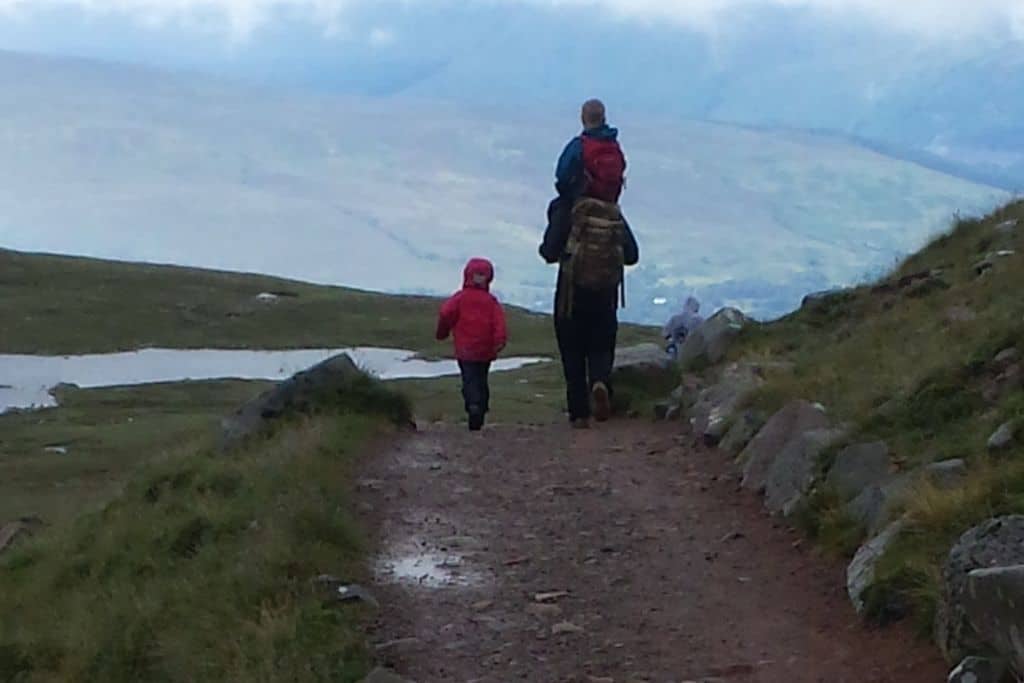
Final Thoughts: Climbing Ben Nevis
We love Ben Nevis, and not just for the view from the top (not that it is guaranteed!). The trek to the summit is accessible but challenging enough for beginners and families to feel real achievement.
The scenery changes along the way, sculpted by the vast geological forces that formed the Scottish hills millions of years ago, and is a photographer’s dream.
Whether you are a novice hiker or not, ensure a safe, successful climb of Ben Nevis by being fully prepared, checking the weather, setting off early, and following your route on the map.
